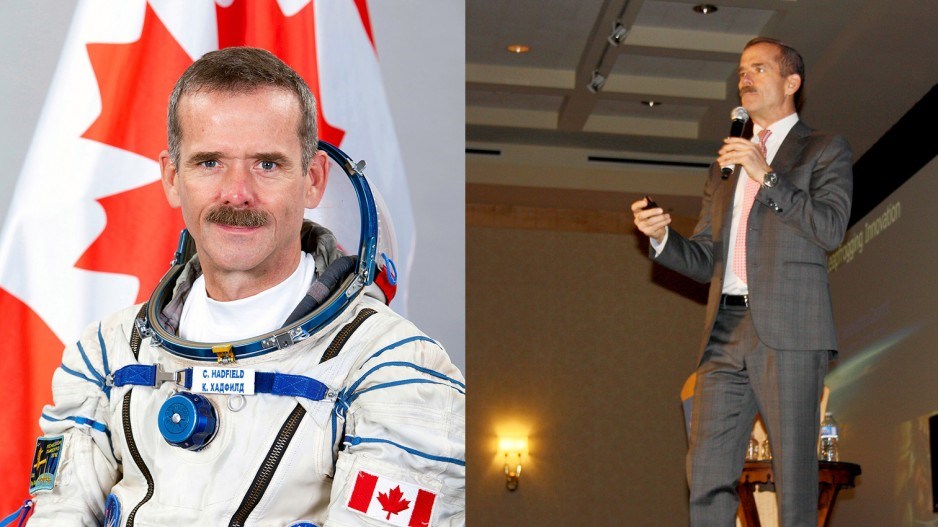Whenever Chris Hadfield wanted to snap a photo of Metro Vancouver, he’d have to pull out his camera just as he was passing above Hawaii.
It takes 90 minutes for the International Space Station (ISS) to circle around the globe and if the former commander of the ISS wasn’t quick enough, he might have ended up with a picture of the Rockies instead.
Speaking at the Vancouver Board of Trade’s B.C. Tech Forum Friday (March 20), the astronaut urged hundreds of entrepreneurs and tech workers in attendance to pursue their innovations no matter the obstacles.
“The business that you folks are in here, the transition from what we do regularly, to what we imagine, to what we can do in the future absolutely shapes who we are as a nation,” he said.
“It’s not just scientific, it’s not just financial, it’s cultural that helps define who were are as a nation when we help push ourselves to the edge like that.”
The astronaut specifically highlighted one B.C innovation: Triumf, Canada’s national laboratory for particle and nuclear physics, which is based on the University Endowment Lands.
In January, the Triumf team announced it had developed a cost-effective way to replace Canada’s dwindling supply of medical isotopes using an SUV-sized particle accelerator known as a cyclotron.
“They are on the cusp of absolute world-class stuff and they do it cheaper than anyone else who has that same technology and they fight for funding all the time,” he said, adding innovations shouldn’t be limited by budgets.
“The personal sense of responsibility and entitlement and capability is what really drives (innovation). We need to instill that in our young people and not raise people to say, ‘The only reason we’re not succeeding is because of this other external force.’”
Hadfield, who travelled to space on both the retired NASA space shuttle and Russia’s Soyuz craft, also recounted the feeling he had when dealing with the external forces of a lift-off.
“To be lying on your back in this (space shuttle) is…maybe what it feels like to be a rat in the jaws of a dog,” he told the crowd, which appeared utterly captivated by his stories.
“I was Canada’s first space walker. This was the coolest thing I’ve done in my life, the most magnificent experience of anything I’ve ever done, to be holding onto a spaceship with one hand…going through the universe with the world.”
But he added the job wasn’t nearly as “easy” as actress Sandra Bullock made it look in the 2013 film Gravity.
“When Sandra came slipping out of her spacesuit, her hair was all nice, she was wearing those little-boy underwear. She looked really nice,” Hadfield said,
“It’s different than that. It’s brutal being in one of these suits…the suit is like a rotisserie and a dry-ice freezer all at the same time and you’re pelted by micrometeorites all the time. And the suit just beats you up. You come out of the suit bloody.”
Despite all of Canada’s accomplishments in outer space, Hadfield said there are still some factors holding the country back from leapfrogging some of its greatest scientific breakthroughs into practical innovations.
He said educational opportunity and access to advanced education are the biggest stumbling blocks when it comes to ensuring people reach their full potential.
“Einstein (could be) walking around somewhere in the Congo, just trying to get enough food, or trying not to be killed or his hand chopped off. We need to enable the world and technology is an amazing leapfrog.”




